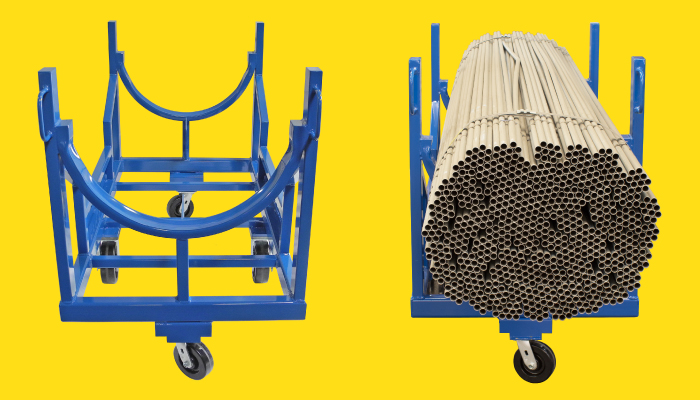We use cookies to make your experience better. To comply with the new e-Privacy directive, we need to ask for your consent to set the cookies. Learn more.
Ergonomic Solutions for Electrical Contractors
The risk of shock isn’t the only occupational hazard that electrical contractors face on a daily basis. Like many construction trades, electrical work is full of ergonomic hazards that can cause serious injuries.
Spools of wire, bundles of conduit, and tools themselves can cause significant stress on muscles when workers try to lift them. In fact, the Occupational Safety and Health Administration has called lifting heavy items "one of the leading causes of injury in the workplace."
Two factors typically play into a musculoskeletal disorder caused by working in the electrical industry: overexertion and cumulative tissue damage. Avoid both risk factors with these simple ergonomic tips:
- Use a forklift to lift and transport the heaviest materials on the job. These materials may include transformers, large bundles of conduit, machinery, and huge spools of wire.
For the latter, equip lift trucks with a Reel Handler Attachment, or, if conditions don't allow access from beneath the spool, an Overhead Reel Lifter.
- When working in narrow aisles or other spaces that don't allow forklift traffic, use carts or portable stands designed specifically for electrical components. The fewer lifts you have to make yourself, the less chance there will be to develop a musculoskeletal injury.

- If you can’t avoid a manual lift, use proper lifting techniques. Keep your back straight, hold loads close to the chest, and avoid twisting or sudden movements. Test the load before you lift. If it feels like a challenge, call a co-worker and execute a two-person lift.
In general, employees shouldn't try to lift more than 50 pounds unassisted. Some may even get injured lifting loads lighter than 50 pounds. If you have assistive devices, use them!
- Ensure that the handles of all carts extend into the worker's “power zone,” the space close to the body, between mid-thigh and mid-chest. Pushing and pulling can also cause injuries when it forces the worker to reach outside the ergonomic power zone to exert the necessary force.
Truly ergonomic handles, such as those found on the BHS Conduit Carrier Cart and Order Picking Cart, place grips firmly within the average worker’s power zone.
- Prefabricate everything you can at ground level, preferably on adjustable workstations. Installing fixtures in ceilings requires staff to hold their arms up over their heads for long periods of time. After a while, that in itself could lead to a musculoskeletal disorder.
Instead, pre-build as much as possible before installation. Scissor Lift Tables make ideal ground-floor workstations. They give staff the power to bring the work into their unique power zone.
In 2006, the National Institute for Occupational Safety and Health held a conference to address the high rate of musculoskeletal injuries in construction trades. Attendees pointed out that even apprentices in the electrical, sheet metal, and pipe trades had an unusually high prevalence of carpal tunnel syndrome, at 8.2 percent.
Carpal tunnel syndrome is an avoidable condition — but only with adequate ergonomic interventions. The right blend of training and equipment should be enough to reduce musculoskeletal injuries of all types, providing a safer, more satisfactory working environment for every electrical contractor.
References:
“Ergonomics eTool: Solutions for Electrical Contractors.” OSHA. Occupational Safety & Health Administration, United States Department of Labor, n.d. Web. 2 Jan. 2016.
“Proceedings of a Meeting to Explore the Use of Ergonomics Interventions for the Mechanical and Electrical Trades.” CDC. National Institute for Occupational Safety and Health, Centers for Disease Control and Prevention, Apr. 2006. Web. 2 Jan 2016.
